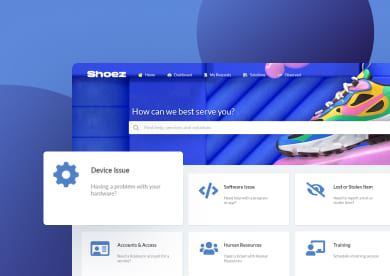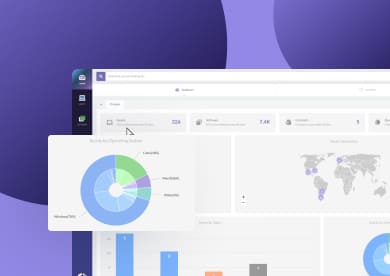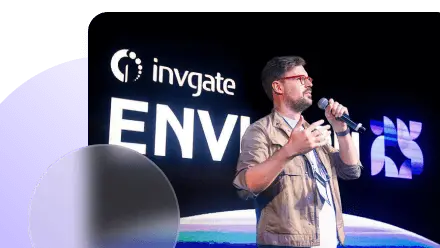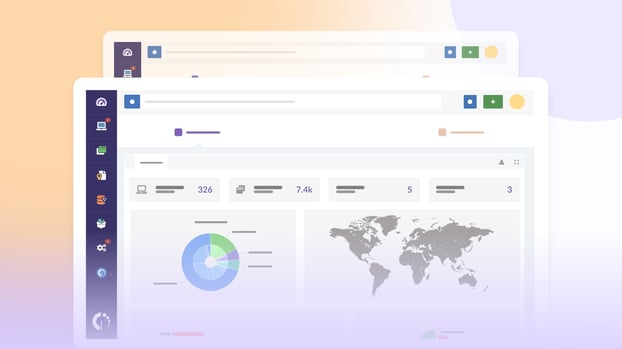An IT Asset Management analyst (or ITAM analyst) will help you stay on top of your hardware, software, and cloud assets — making sure everything is tracked, used efficiently, and aligned with your business goals. And that’s no minor task. As organizations grow, their tech environments become more complex, decentralized, and expensive to manage.
That’s why this role is more important than ever. In this article, we’ll break down what an IT Asset Management analyst does, what skills they need, the challenges they face, and how the right tools can make all the difference.
What does an IT Asset Management analyst do?
An IT Asset Management analyst plays a hands-on, operational role within the IT department. Their main job is to support the day-to-day execution of IT Asset Management by collecting data, maintaining records, identifying risks, and making sure asset-related tasks run smoothly.
Analysts often work under the direction of an IT asset manager or IT operations lead, but they’re expected to take initiative, spot inefficiencies, and make recommendations based on real data. Depending on the organization, this can be an entry-level or mid-level position.
How is this different from an IT asset manager?
The analyst focuses on execution — gathering data, running reports, and flagging issues. The IT asset manager oversees the whole program, makes high-level decisions, defines processes, and interacts with leadership.
Roles and responsibilities of an IT Asset Management analyst
To fully understand what an IT Asset Management analyst does, it helps to break down both their role within the organization and the specific responsibilities they take on.
Role of an IT Asset Management analyst
The analyst acts as the operational backbone of the ITAM process. They’re responsible for making sure all the procedures, tools, and policies related to asset tracking and governance are applied correctly and consistently. While they might not be the ones defining those policies, they are essential in enforcing them.
They often serve as a bridge between technical teams and administrative departments like Finance, Procurement, or Compliance — making sure asset data flows smoothly across systems and stakeholders.
Responsibilities of an IT Asset Management analyst
While specific tasks may vary depending on the company’s size and maturity, most analysts are responsible for:
- Maintaining the IT asset inventory — Ensuring that all hardware, software, and cloud assets are properly registered, tagged, and updated in the system.
- Tracking the asset lifecycle — Monitoring assets from acquisition to retirement, including deployment, maintenance, upgrades, and disposal.
- Supporting audits and compliance efforts — Providing documentation and reports to demonstrate software license compliance and hardware tracking.
- Analyzing usage and cost data — Reviewing trends in asset consumption to identify opportunities for savings or optimization.
- Handling asset-related requests — Assisting with new hires, equipment swaps, software allocations, and returns.
- Collaborating with other departments — Working with Service Desk, Security, Finance, and others to ensure consistent data and workflows.
- Updating documentation — Keeping records and reports accurate, complete, and ready for internal reviews or audits.
- Flagging risks or inconsistencies — Identifying gaps in asset data, non-compliance issues, or unusual usage patterns.
Skills required for IT Asset Management analyst
To succeed as an IT Asset Management analyst, you need more than just technical knowledge. The role requires a mix of skills that range from data analysis to cross-team communication. Here’s how they break down:
#1: Technical skills for IT Asset Management analysts
These are the core hard skills you need to work efficiently with tools, systems, and IT environments.
- Familiarity with ITAM software and CMDB tools — Understanding how asset management platforms work and how to update and extract data.
- Knowledge of IT infrastructure — Basics of how hardware, software, and networks interact.
- License and compliance awareness — Understanding software licensing models, renewal cycles, and audit requirements.
- Experience with reporting tools — Being able to build or interpret dashboards, spreadsheets, and automated reports.
- Understanding of ITIL or similar frameworks — Especially helpful for aligning Asset Management with broader IT processes.
#2: Analytical and business skills for IT Asset Management analysts
These skills help analysts turn raw data into insights and support smarter decision-making.
- Data analysis — Spotting trends in asset usage, costs, and lifecycle status.
- Cost optimization mindset — Looking for ways to reduce waste or improve asset utilization.
- Problem-solving — Investigating inconsistencies or gaps in data and proposing solutions.
- Process orientation — Following and improving repeatable workflows.
#3: Soft skills for IT Asset Management analysts
Since the analyst works across teams, soft skills play a big role in their day-to-day work.
- Communication — Explaining technical information clearly to non-technical stakeholders.
- Collaboration — Working with departments like Finance, Security, Procurement, and IT Support.
- Attention to detail — Ensuring accuracy in inventory data and documentation.
- Initiative — Proactively identifying risks or improvement opportunities instead of just reacting.
Unlocking Career Progression
Discover the strategies to lifelong learning and evolvement in IT
Download for free
IT asset management analyst challenges
Even with the right processes in place, IT Asset Management analysts face several day-to-day challenges that can impact data quality, efficiency, and overall IT governance.
Here are some of the most common issues they deal with:
- Limited visibility and inaccurate data — Without a reliable, up-to-date inventory, analysts struggle to track what assets exist, where they are, and who’s responsible for them. Manual updates and disconnected records only make things worse.
- Security risks — Unmonitored or unpatched assets can create serious vulnerabilities, putting the organization at risk of cyberattacks or data breaches.
- Compliance challenges — Whether it’s license compliance, usage restrictions, or internal policy enforcement, maintaining compliance across hardware, software, and cloud resources is a constant pressure. Missed renewals, overuse, or lack of documentation can lead to audits, fines, or operational issues.
- Not enough IT resources — Many analysts work without the right tools, relying on spreadsheets and manual processes that are time-consuming and prone to error.
- Lack of integration between systems — ITAM platforms that don’t connect with ITSM, procurement, or security tools lead to duplicate work and poor-quality data, making it harder to generate insights or take action.
How InvGate Asset Management supports IT asset management analysts

InvGate Asset Management is designed to make life easier for IT Asset Management analysts. It’s a no-code platform with an intuitive interface, built for teams that need clarity, speed, and control over their assets. That means analysts can run and improve ITAM processes without relying on developers or external support.
Trusted by organizations like the KPMG, NASA, and PWC, InvGate delivers a complete solution for tracking, managing, and optimizing assets across the entire organization.
Here’s how it helps ITAM analysts handle their day-to-day work:
- Centralize asset inventory — Build and maintain a single source of truth for all IT and non-IT assets, including hardware, software, cloud subscriptions, and other resources.
- Track lifecycle stages — Monitor assets from acquisition to disposal, with full visibility over deployment, usage, and retirement.
- Monitor asset health and usage — Automatically collect data on usage, costs, performance, and condition, helping analysts prioritize maintenance and replacement.
- Stay compliant — Use built-in features to track regulatory requirements, contract terms, and internal policies linked to each asset.
- Build custom dashboards — Create tailored visualizations to track asset distribution, status, cost trends, compliance flags, and more — all without needing technical skills.
- Automate compliance monitoring — Set up rules, alerts, and smart tags to detect anomalies or non-compliant assets in real time.
- Integrate with your ecosystem — Connect seamlessly with ITSM platforms (like InvGate Service Management), remote support tools (like Splashtop), directory services (like Active Directory), and more to streamline operations.
Connect our solutions with the apps you use every day.
Explore InvGate's integrations

With InvGate Asset Management, analysts drive better decisions, faster responses, and smarter IT spending. Ready to see it in action? Start your 30-day free trial — no credit card required.















